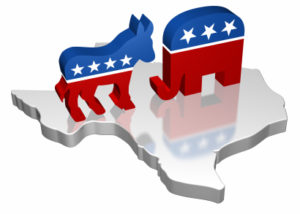I was hoping the 2018 midterm election would turn Texas from blood red to purple; turning the state blue was out of the question.
The results are in and from my perch it appears the state is still red, as in Republican-leaning. Texas, though, is not as red as it was prior to the balloting this past week.
Yes, “red” means Republican, “blue” means Democrat and “purple” is a combination of the two primary colors, meaning that “purple” states are those “swing” territories, battlegrounds if you will.
Texas’s roster of statewide offices remains occupied by an all-GOP lineup. The state’s featured race, between U.S. Sen. Ted Cruz and Beto O’Rourke, the Democratic challenger, finished with Cruz being re-elected by less than 3 percentage points. The closeness of that contest gives Texas Democrats some hope they might break the GOP’s death grip on statewide offices as soon as the 2020 election.
The Texas Legislature saw Democrats gain 12 seats in the 150-member House; Democrats gained two seats in the 31-member Senate. The House GOP majority remains substantial, but the Republican hold on the Senate is bordering on tenuous, although it’s not there yet.
Democrats did manage to flip some U.S. House seats. The one that interested me was the seat held by GOP Rep. Pete Sessions, who got beat by Democratic upstart Colin Allred in North Texas.
What does all this portend for the state as we head into the 2020 presidential election year? It might be that Texas becomes more of a battleground than it has been since, oh, 1980. In every election year since the Ronald Reagan landslide the state has been cast aside by both parties: Democrats have given up on the state; Republicans take us for granted.
That has-been role might change come 2020.
I am highly reluctant, though, to suggest that Texas is anything other than Republican red. It’s just that the state’s reddish hue isn’t nearly as vivid as it has been for so very long.
The next election cycle, therefore, might be a lot more interesting than anything we’ve seen here in some time.
